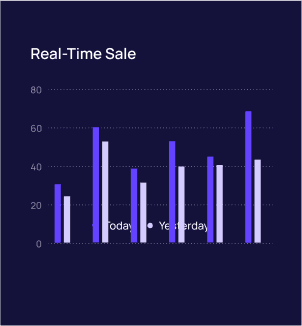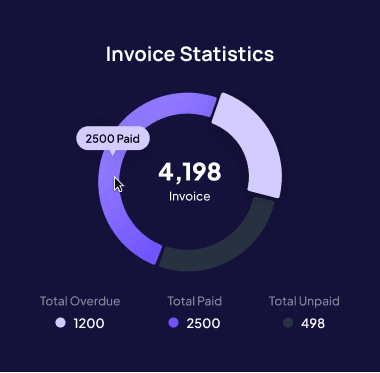IT Integration in Mergers and Acquisitions: Structuring Synergy
IT Integration in Mergers and Acquisitions: Structuring Synergy
Recurring revenue streams provide predictable cash flow.
Recurring revenue streams provide predictable cash flow.

Utilizing Short-Term Financing
Short-term financing can help businesses manage temporary cash flow gaps. These options provide quick access to funds when needed:
Business lines of credit: A flexible financing option that allows you to borrow as needed.
Invoice financing: Receive an advance on outstanding invoices to maintain cash flow.
Short-term business loans: Quick funding solutions for urgent expenses or opportunities.
Merchant cash advances: Suitable for businesses with high credit card sales but should be used cautiously due to high fees.
Using financing strategically ensures that businesses can cover short-term expenses without depleting cash reserves.
Reducing Debt and Interest Costs
Excessive debt and high interest payments can drain cash flow, limiting your ability to invest in growth. A proactive debt reduction strategy helps maintain financial flexibility.
Prioritize high-interest debt repayments to reduce financial strain.
Refinance loans for lower interest rates if better terms become available.
Consolidate debts to simplify payments and potentially lower interest costs.
Avoid over-reliance on credit for daily operations unless absolutely necessary.
Managing debt wisely ensures that more of your revenue is available for business development rather than being consumed by interest payments.

Monitoring and Adjusting Cash Flow Strategies
Even the best cash flow strategies require ongoing monitoring and adjustments. Business environments change, and cash flow plans should adapt accordingly.
Review cash flow statements regularly. Monthly analysis helps identify trends and potential risks.
Adjust pricing strategies. Ensure prices cover costs while remaining competitive.
Analyze customer payment behaviors. If late payments increase, consider stricter credit policies.
Continuously refine expense management. New cost-saving opportunities arise as businesses evolve.
By keeping a close eye on cash flow trends, businesses can make data-driven decisions that promote financial health.
Final Thoughts
Effective cash flow management is essential for long-term business success. By forecasting cash flow, optimizing expenses, improving collections, and leveraging technology, businesses can maintain financial stability and position themselves for sustainable growth.
Would you like this guide formatted into a professional article or report? I can also add case studies or real-world examples if needed!

Utilizing Short-Term Financing
Short-term financing can help businesses manage temporary cash flow gaps. These options provide quick access to funds when needed:
Business lines of credit: A flexible financing option that allows you to borrow as needed.
Invoice financing: Receive an advance on outstanding invoices to maintain cash flow.
Short-term business loans: Quick funding solutions for urgent expenses or opportunities.
Merchant cash advances: Suitable for businesses with high credit card sales but should be used cautiously due to high fees.
Using financing strategically ensures that businesses can cover short-term expenses without depleting cash reserves.
Reducing Debt and Interest Costs
Excessive debt and high interest payments can drain cash flow, limiting your ability to invest in growth. A proactive debt reduction strategy helps maintain financial flexibility.
Prioritize high-interest debt repayments to reduce financial strain.
Refinance loans for lower interest rates if better terms become available.
Consolidate debts to simplify payments and potentially lower interest costs.
Avoid over-reliance on credit for daily operations unless absolutely necessary.
Managing debt wisely ensures that more of your revenue is available for business development rather than being consumed by interest payments.

Monitoring and Adjusting Cash Flow Strategies
Even the best cash flow strategies require ongoing monitoring and adjustments. Business environments change, and cash flow plans should adapt accordingly.
Review cash flow statements regularly. Monthly analysis helps identify trends and potential risks.
Adjust pricing strategies. Ensure prices cover costs while remaining competitive.
Analyze customer payment behaviors. If late payments increase, consider stricter credit policies.
Continuously refine expense management. New cost-saving opportunities arise as businesses evolve.
By keeping a close eye on cash flow trends, businesses can make data-driven decisions that promote financial health.
Final Thoughts
Effective cash flow management is essential for long-term business success. By forecasting cash flow, optimizing expenses, improving collections, and leveraging technology, businesses can maintain financial stability and position themselves for sustainable growth.
Would you like this guide formatted into a professional article or report? I can also add case studies or real-world examples if needed!

Utilizing Short-Term Financing
Short-term financing can help businesses manage temporary cash flow gaps. These options provide quick access to funds when needed:
Business lines of credit: A flexible financing option that allows you to borrow as needed.
Invoice financing: Receive an advance on outstanding invoices to maintain cash flow.
Short-term business loans: Quick funding solutions for urgent expenses or opportunities.
Merchant cash advances: Suitable for businesses with high credit card sales but should be used cautiously due to high fees.
Using financing strategically ensures that businesses can cover short-term expenses without depleting cash reserves.
Reducing Debt and Interest Costs
Excessive debt and high interest payments can drain cash flow, limiting your ability to invest in growth. A proactive debt reduction strategy helps maintain financial flexibility.
Prioritize high-interest debt repayments to reduce financial strain.
Refinance loans for lower interest rates if better terms become available.
Consolidate debts to simplify payments and potentially lower interest costs.
Avoid over-reliance on credit for daily operations unless absolutely necessary.
Managing debt wisely ensures that more of your revenue is available for business development rather than being consumed by interest payments.

Monitoring and Adjusting Cash Flow Strategies
Even the best cash flow strategies require ongoing monitoring and adjustments. Business environments change, and cash flow plans should adapt accordingly.
Review cash flow statements regularly. Monthly analysis helps identify trends and potential risks.
Adjust pricing strategies. Ensure prices cover costs while remaining competitive.
Analyze customer payment behaviors. If late payments increase, consider stricter credit policies.
Continuously refine expense management. New cost-saving opportunities arise as businesses evolve.
By keeping a close eye on cash flow trends, businesses can make data-driven decisions that promote financial health.
Final Thoughts
Effective cash flow management is essential for long-term business success. By forecasting cash flow, optimizing expenses, improving collections, and leveraging technology, businesses can maintain financial stability and position themselves for sustainable growth.
Would you like this guide formatted into a professional article or report? I can also add case studies or real-world examples if needed!
Recent Posts
Recent Posts
Recent Posts

Similar Blog You May Like
Similar Blog You May Like
Similar Blog You May Like


Unlock Your Financial Potential with Automation
Create dynamic budgets with predictive insights and scenario planning to help you manage future cash flows.




Unlock Your Financial Potential with Automation
Create dynamic budgets with predictive insights and scenario planning to help you manage future cash flows.




Unlock Your Financial Potential with Automation
Create dynamic budgets with predictive insights and scenario planning to help you manage future cash flows.







